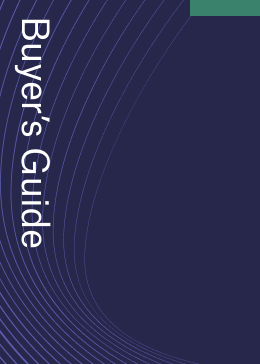
“I have had to get comfortable with feeling like a square peg in a round hole”, says Sue Keay, director of the University of New South Wales (UNSW) AI Institute and chair of the Board of Directors at Robotics Australia Group.
She is referring to her experience as a woman in science, technology, engineering and mathematics (STEM), carving out a career in the cutting-edge industry of robotics, which has also intersected with her personal and ancestral connection to mining. While she started her working life mowing lawns, her degree in geology brought her into the field of earth sciences, first in research science and later in research management and commercialisation across a range of focus areas.
Now thrice-acclaimed by the Society of Manufacturing Engineers for her contributions to robotics – and last week presented with the Malcolm Chaikin Oration medal – Sue has faced challenges from the earliest stage of her journey.
“I was looking ahead, and there were so few women. I really don’t feel that I had any role models, which was off-putting, because if you can’t see someone ahead of you that has been successful, it makes you doubt whether you are in the right place.”
Shaping Australia’s robotics sector: Keay’s career
Keay got her geology degree at the University of Newcastle in New South Wales, Australia, before moving onto her PhD in isotope geochemistry at the Australian National University, which she completed in 1998. Her PhD offered her experience working in a uranium mine, but she found her calling in research commercialisation, working alongside material and social scientists, as well as engineers in the water recycling space.
She later brought her experience in earth sciences and expertise in robotics and computer vision to the earliest plans for Australia’s robotics sector, working on Australia’s first robotics road map as the chief operating officer (COO) for the ARC Centre of Excellence for Robotic Vision. The plan was completed in 2018, and Keay points to this as a key milestone in both her career and the industry: “It was transformative in that it was the first attempt to really catalogue Australia’s capability in robotics.”
She explains that Australia’s challenges were in fact a unique advantage: as a country with a low population density, areas of difficult terrain and a variable climate, “Australia has had to get pretty good at developing technologies that overcome those barriers and provide remote services”, she says.
These conditions have given Australia’s robotics sector a competitive edge. Creating technologies that can be operated hundreds of kilometres away from the mine site, or manage temperature extremes, water shortages and a lack of GPS satellites, is a challenge that has driven innovation and creativity. “We have to be self-sufficient, which is why Australia also has a focus on applying some of these technologies in space. A lot of the issues are analogous to those that you would experience when operating on the moon or on another planet.”
Her work doesn’t always require her to think so far away from home, however. Among the many boards Keay has sat on is the board of the Cooperative Research Centre for optimising resource extraction, the first point at which her robotics research converged with the mining sector.
Following this, she became the robotics technology lead for Oz Minerals, a copper mining company based in Australia.
“During my time with Oz minerals, my main task was to develop a robotics and automation road map for the company, which I found fascinating. Oz Minerals was really committed to accelerating the adoption of robotics and automation across the business. It was a very innovative company where the CEO really walked the talk.”
Oz Minerals was acquired by BHP and, in May 2023, Keay moved over, before eventually taking on a consulting role as a partner and director of the Future Work Group to research the future of work and how AI and robotics could be applied across a range of businesses.
Now, Keay serves as the director of the UNSW AI Institute. “It really is my ideal job”, she says. “I get to be nosy and ask lots of questions about how AI and robotics are being applied across all different sectors.
“But of course, I have a soft spot for our mineral resources.”
Why we need women in robotics and STEM
Keay has been a board member of Women in Robotics since July 2019, encouraging women in STEM and building a community to support women feeling isolated in male-dominated fields. It matters, she says, because the industry needs women.
She estimates that “in robotics, less than 10% of the people who are developing new technologies are women”. Indeed, Engineers Australia reported in 2023 that women made up only 14% of the engineering workforce, noting that, while that figure is growing, it would take 70.8 years for women to be equally distributed in the engineering profession compared to their male counterparts.
“We have seen from history that technological developments suffer when there is not a diversity in views, when one gender is not considered in the development of the technology,” Keay explains.
She points to the example of NASA’s first all-female spacewalk in March 2019, which was cancelled because the International Space Station did not have enough spacesuits in sizes appropriate for women. Crash test dummies in cars, too, were initially based only on men and caused disproportionate harm to women before changes were made, she says.
“The problem with women not being in the room when these technologies are being developed is that they are not considered as the users of the technology”, explains Keay. “Given the increasing importance of robotics and AI in our daily lives, it is imperative that women are knocking on the door, insisting that they have a seat at the table, because these technologies will influence our lives in unexpected ways. If they are only developed by one gender, they are going to have significant blind spots.”
In 2024, the Australian Government released figures that showed women represented 15% of all STEM workers and 37% of university STEM enrolments. It also found that, in 2023, women in STEM sectors earned an average of 16% less than men.
Similarly, data from the Workplace Gender Equality Agency shows that women comprise around 22% of mining employees in Australia, with a gender pay gap at 92% of mining employers.
Keay believes the gender imbalance in robotics – and STEM more broadly – is rooted in the age-old stereotypes that define ‘appropriate’ roles for men and women. Cultural barriers and hard-to-challenge social norms have created an exclusionary culture within these traditionally male-dominated industries.
“I find it very frustrating that there is often a focus on encouraging women to join these industries when it should be more about making the environment welcoming. It is like encouraging someone to jump into a fire; they probably want to let the embers burn out first”, she says.
Encouraging women in STEM and mining
Keay reflects that she has often been the only woman in the room, but stresses that women can’t wait for change: “Things won’t change if women don’t keep knocking on the door,” she says.
Studies have tracked the decline in confidence of girls in STEM subjects in Australia as they progress through school, with girls constituting only a quarter of STEM enrolments by year 12 (typically between the ages of 16 and 17).
Keay offers the following advice to young women entering robotics or STEM more broadly: “Don’t let the setbacks push you out of the field. Some days will be harder than others. People are going to say dumb stuff or, in some cases, do dumb things, but you can’t fight every battle.
“You probably won’t receive the recognition that you deserve, and that is wrong. However, it is important for womankind to persist and insist on having a seat at the table, so that we can have some influence on the way a lot of these technologies are being developed.”
She adds, however, that; “If you find the environment too tough and decide to turn elsewhere, then don’t beat yourself up about it.
“You don’t have to be a warrior for the rest of women – but I would encourage you to try and stick at making contributions, because we will never get to the point where we have parity unless we are actively protesting our right to be part of the conversation.”







